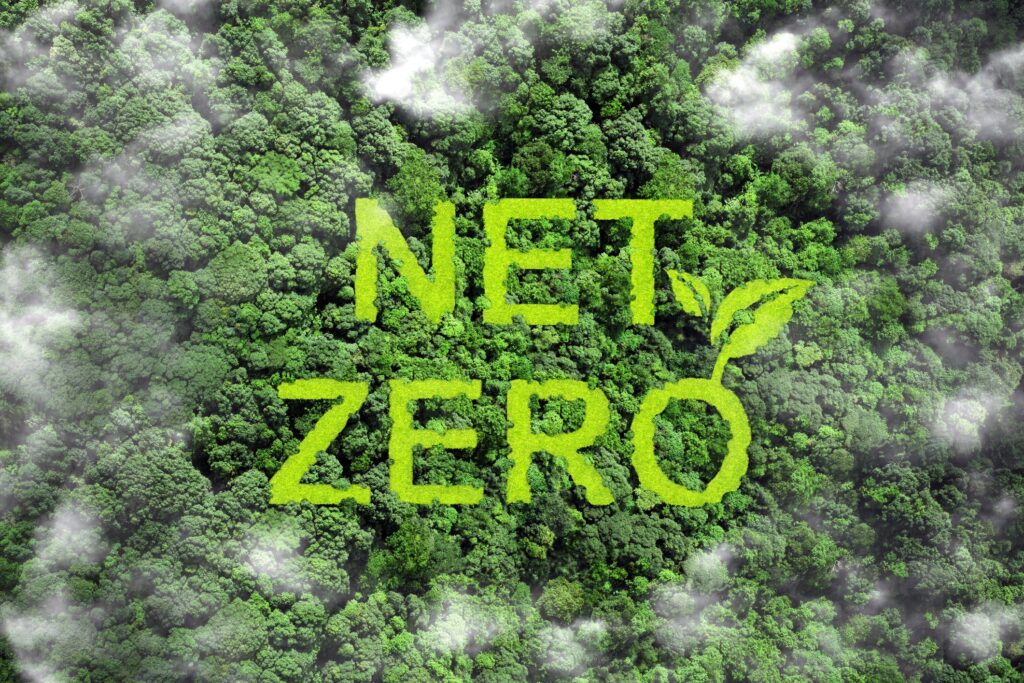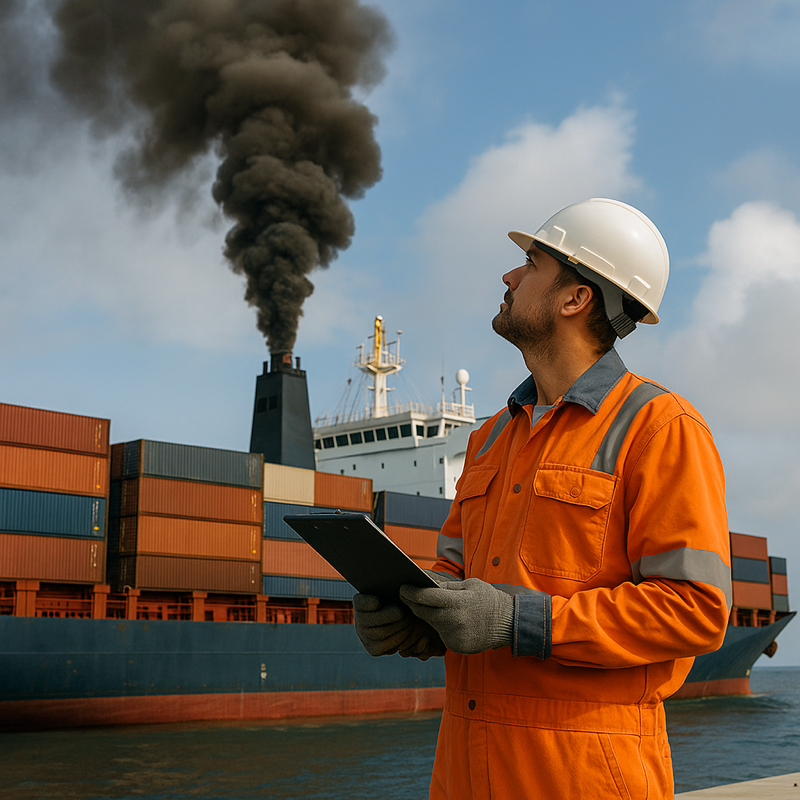According to a recent report by Accenture, 34% of the largest companies around the world have committed to taking action toward net zero emissions. The report also notes that 93% will not succeed in reaching their goals unless they double their pace of emissions reduction between now and 2030.
Reducing carbon emissions is becoming an increasingly important area of focus for companies, and with that, we are hearing more about the concept of carbon neutrality. In 2019, non-profit organization Climate Neutral was launched and has since certified 349 brands as climate neutral, together measuring and offsetting over 1M tonnes of carbon in the last year, with the potential for this to continue climbing as more companies commit to this goal.
For most, carbon neutrality is a big commitment, different from simply reducing carbon emissions. The idea of carbon neutrality is to eliminate a company’s impact on the environment. While this may sound like a major challenge, tools and resources have been designed to help companies reach this goal—like carbon offsetting projects, various insetting strategies, and consulting services to help with progress. What matters is that the company is committed to investing in sustainability and the drive to continuously prioritize it, even making it part of its company values.
Sustainability is not something we should take lightly. Some approach the subject thinking they cannot afford the time and resources it would take to develop a plan and reach their goals, but what more are now realizing is that we—and the environment—can’t afford not to. And with an average of over 70% of a company’s emissions being indirect emissions from their value chain, carbon-neutral shipping is a good place to start.
What Does Carbon Neutral Mean?
Carbon neutral is when an organization has balanced the amount of carbon dioxide they release into the atmosphere and the amount they remove from the atmosphere. This is achieved by compensating for the emissions released with carbon offsetting, investing in projects such as reforestation. Essentially, carbon neutrality means that an organization has achieved a neutral carbon footprint.
What is the Difference Between Carbon Neutral and Net Zero?
While the terms carbon neutral and net zero carbon are often assumed to have the same meaning, they are, in fact, slightly different. Carbon neutrality refers to offsetting emissions by investing in carbon credits, while net zero carbon means reducing emissions as much as possible and only offsetting the remaining emissions that cannot be eliminated. Net zero carbon is a much more ambitious target as it involves reducing emissions rather than just offsetting them. Both carbon neutrality and net zero carbon are essential steps toward mitigating climate change and reducing our impact on the environment. Still, only net zero can help keep the world on track for a global rise in temperature less than 1.5 degrees C (compared to pre-industrial levels), according to the Paris Agreement.
What Does Carbon Neutral Shipping and Delivery Mean?
Aiming toward carbon neutrality, a company might first consider the emissions they are directly responsible for, which originate from the assets and processes they own or control. These are Scope 1 emissions. Scope 2 emissions come from purchased electricity, steam, heating, or cooling. But it is Scope 3 emissions that cover the indirect emissions from sources like the delivery of goods. Scope 3 emissions include emissions in the company’s value chain that they do not control. Since these are included in the concept of carbon neutrality, companies should carefully choose the supply chain partners they use for their shipping services.
With shipping, the Scope 1 emissions of the carrier are the Scope 3 emissions of the company using the carrier. This means that when a company looking for shipping services is choosing a carrier, they do not have a direct say in the fuel efficiency and exact route of the truck, container ship, or airplane. They do, however, have other methods of reducing carbon emissions in the shipping and delivery category through processes they can control, like selecting sustainable packaging, using optimized logistics strategies, or using different modes of transport.
When it comes to the company’s Scope 3 emissions from the carriers they choose to work with, it is a matter of partnering with those that provide a shipping service that aligns with the company’s values for sustainability. Some carriers offer services explicitly designed to be carbon neutral for this reason, while others invest in electric vehicles or use logistics strategies that attract environmentally-conscious companies.
The Benefits of Carbon Neutral Shipping and Delivery
There is a growing list of reasons to pursue carbon-neutral shipping and delivery, which the following four types of benefits summarize.
Environmental impacts
The primary benefit, of course, is eliminating the negative impact a company has on the environment. Carbon-neutral shipping helps reduce the greenhouse gasses, carbon and methane being the main ones, emitted into the atmosphere, contributing to climate change.
Further demand for sustainability
As more companies demand carbon-neutral delivery from carriers and other sustainable practices from other supply chain partners, it can create a domino effect that leads to broader change in the transportation industry. This helps to drive innovation and investment in new technologies and processes for reducing emissions.
Transportation optimization
Some added benefits stem from the benefits of optimization. A common question is whether carbon-neutral delivery takes longer than regular delivery. Still, many companies find strategies that help reduce transit time and enable shipments to reach their customers faster. Another possible benefit as a result of this optimization is reduced transportation spend.
Brand reputation
Lastly, like how a company may select its supply chain partners, customers increasingly purchase from companies adopting environmentally responsible practices. By prioritizing sustainability, companies can improve their brand image for these customers.
Strategies to Reduce Carbon Emissions in Shipping & Delivery Operations
There are various approaches that companies can take to reduce the carbon footprint of their shipping, with different options available depending on their current operations and the resources they have available to them. Companies should consider each of the following strategies for better success in reducing their Scope 3 emissions.
Leveraging Technology to Inform Shipping Decisions
Before any data-driven change can occur, companies must clearly understand their current carbon emissions and how their decisions affect the outcome. For shipping, solutions are available that drill down into the granular level of different lanes and vessels used and how these factors affect the amount of carbon dioxide produced.
Unfortunately, there is a lack of primary data, or data from exact measurements at the source, like a truck’s exact engine, to make accurate and precise CO2 measurements. Instead, the options are to use default data or modeled data. Default data involves a method that essentially provides estimates based on averages of data. However, these calculations from averages, while they can still be GLEC-accredited (Global Logistics Emissions Council), are not precise enough to detect small changes in emissions, which is necessary to accurately inform a company’s sustainability efforts. Using modeled data is an alternative that offers both accuracy and precision by enhancing primary data with data from other sources to ensure it is tailored to the exact details of the shipment. With modeled data, companies can fully measure and grasp each shipping decision’s effects, like lane selection.
Utilizing Modes of Transport with a Smaller Carbon Footprint
Calculating carbon emissions from modeled data paired with technology can produce insight into which route is used, but from a wider viewpoint of the data, it can also uncover insights into which mode of transport to use. If the first leg of transport is overseas, companies have two options of mode—ocean or air—and between the two, ocean is far more fuel efficient for the volume of freight it can carry. Once freight has reached the ground, shippers can choose between truck, rail, inland waterway, or a combination.
According to the Inland Rivers Ports and Terminals (IRPT) association, a gallon of fuel can transport one ton of cargo by barge about twice as far as rail for the same amount of freight and almost nine times as far compared to a truck. Naturally, some limitations often prevent shippers from using inland waterways, namely, limited capacity, limited routes, and longer time in transit due to a lower speed, but inland waterways and rail make fuel-efficient alternatives to trucks if the option is available.
Optimizing Routes and Shipment Sizes to Reduce Fuel Consumption
For shipping via truck, companies that have control over the details of their logistics and transportation can plan to reduce carbon emissions through their routes and shipment sizes. Route optimization is a strategy for reducing carbon emissions (that also saves the carrier time and money), which uses technology to find the most efficient route considering factors such as distance, elevation, traffic patterns, and schedules. The other primary strategy is zone-skipping or consolidating shipments to take advantage of when multiple small shipments are headed to the same area. This reduces the number of trucks used to transport the same volume of goods and reduces the number of stops the truck must make, decreasing the idle time and resulting in an overall increase in fuel efficiency.
Implementing Sustainable Packaging Solutions
A company’s shipping carbon footprint is not just the emissions produced by transportation; packaging materials also have a role. More shippers are using recycled materials for their packaging and designing to use fewer materials, reducing the energy required to produce this packaging. Recyclable materials are also less likely to end up in landfills and reduce the need for virgin material to be processed. Companies are also designing ways to use lighter-weight and more space-efficient packaging. Both strategies increase the efficiency associated with transporting the packed goods, as they help reduce the weight of the load and amount of fuel needed and potentially reduce the number of trucks on the road.
Use Carbon Offsetting
The above strategies are methods of carbon insetting or reducing emissions within a company’s supply chain activities, which is necessary for achieving net zero carbon emissions. The last strategy—carbon offsetting—is required for both net zero and carbon neutral shipping because it offsets what carbon emissions cannot be removed from the shipping and delivery process.
Companies can invest in carbon offset projects, purchasing carbon credits according to how much carbon dioxide they remove from the atmosphere. These projects may include planting new trees, funding renewable energy, or converting waste to energy. With their investments, companies gain data transparency into their carbon offsetting, which they can use in their sustainability reports. While the main reason for offsetting is to bring a company’s environmental impact down to zero, it has the added benefit of promoting innovation that can lead to better sustainability practices in the future.
The Power of Offsetting and Insetting for Carbon Neutral Shipping
Carbon offsetting and insetting each have important roles in carbon neutrality, and companies would not be able to achieve net zero emissions without both. Reducing carbon emissions may seem like a massive task, but the best way to get started is to focus first on measuring and gaining visibility for reporting. Reporting on current emissions provides baseline measurements, allowing companies to identify opportunities to reduce carbon emissions through carbon insetting. This way, their targets are measurable and attainable, while companies also gain accountability to their stakeholders on their environmental performance. From here, companies can approach offsetting to achieve carbon-neutral shipping operations.
Helping to facilitate this two-prong approach for importers and exporters, Greenabl works with Searoutes for shipping-related carbon emission measurement, planning, and reduction; Cloverly for carbon credits through quality insetting and offsetting projects; and BluSpark, which supports BCOs and shippers with procurement and ocean freight consulting to reach their goals of reducing their carbon footprint.
Collaborating with companies that share the goal of reducing carbon emissions provides importers and exporters with valuable expertise and support. By working together, they can make significant progress toward achieving meaningful, large-scale change in their efforts to reduce carbon emissions. To learn more about Greenabl and get started on the path to better sustainability, reach out to us today.


